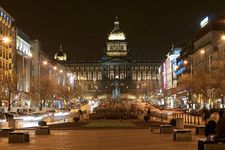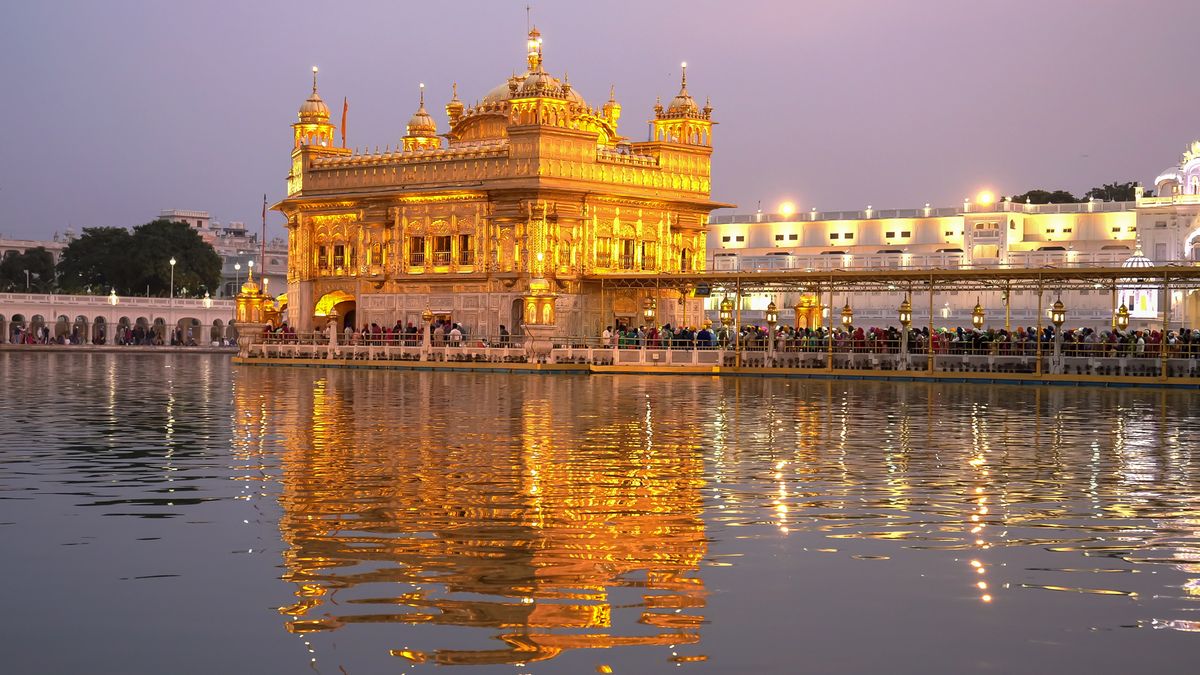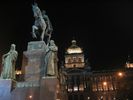See all Attractions in Prague
Wenceslas Square (Václavské náměstí)
Václavské náměstí Praha 1 - Nové Město http://www.praguewelcome.cz/srv/www/en/objects/detail.x?id=45151About
Wenceslas Square | HistoryThe grandly conceived square originated at the New Town establishment by Karel IV in 1348. It is 750 m long and 63 m wide in the upper part and 48 m wide in the bottom part. Within a few years, houses and workshops of craftsmen, malt houses and breweries were built around the assessed area. The square was called the Horse Market, as it was intended for trading horses, and in addition to the sale of various agricultural products. Later cots were built at the bottom of the square for sale of saddler's and case goods, fabrics and spices. Markets took place here till 1877. Also executions were held at the market place; gallows stood both at the bottom and at the top of the square. In the bottom part called Na Můstku there used to be a pond with mill; public well stood in the middle of the square and later in the axis of the square three fountains were built. By the end of the 14th century Horse Gate or Gate of St. Procopius was built as a part of the fortification wall at the place of today's National Museum; the gate was demolished in 1875. In 1680 the Baroque statue of St. Wenceslas by Jan Jiří Bendl (now at Vyšehrad) was built at the mouth of Jindřišská Street and later the Baroque statue of Jan Nepomucký with the angels by an unknown sculptor was built opposite today's Opletalova Street in 1727. Both statues were removed in 1879. A statue of the patron saint of the Czech lands used to be a place where inhabitants of Prague assembled at important moments. After one such meeting of people in 1848 Karel Havlíček Borovský suggested to rename to the Horse Market to the St. Wenceslas square. In 1786 Czech patriots opened the first Czech theatre called Shed (Bouda) near the middle fountain, where performances were played in the Czech language. It was demolished in 1789 for interfering with traffic. Soon the square was paved with pebble boulders, known as "bull's eyes". In 1865 gas lighting was installed there. Gas lamps were installed in rows along sidewalks and from 1868 massive iron lampposts with lamps were installed in the middle axis of the square designed by architect Aleš Linsbauer and sculptor Eduard Veselý. In 1895 electric lighting was permanently established at the Wenceslas Square.In 1890 the large building of the National Museum (see separate document) was built on top of the square and has been its dominant till these days. The square was initially without green and trees. In 1876 four rows of trees (sycamores etc.) were planted in the lower part of the square and 6 rows of trees were planted in the upper part. Many of them soon died, and so in the middle of 1890s the director of the Prague parks, František Thomayer replaced them with green lime trees which were planted along the sidewalks. Today, silvery tomentose or lindens, which are more durable, grow at the square. There are more than 150 of them.In 1884, the first tram came across the square, still drawn by horses. Its route led from the Na Můstku across the square to Vinohrady and the Nusle stairs. The first electrical tram drove on rails, relocated to the sidewalks in 1900. The trams provided the transport across the square until 1980. The last tram was the night tram number 22 on 13 December of that year. After removing rails number of ornamental shrubs, grasses and flowers were planted here, and in the 1980s an extensive pedestrian zone was adapted in the lower part of the square. Near the statue of St. Wenceslas a promenade was built.From 1912 to 1913 the Statue of St. Wenceslas by Josef Václav Myslbek (see separate document Monuments and statues) was built at the top of the square. Saint Wenceslas, the patron of Czech lands, witnessed many famous and tragic events in the modern history of the country and the people of Prague. Likewise, Wenceslas Square has always been and still is primarily a natural centre of Prague New Town inhabitants and Prague citizens in general. After the World War I, it be






